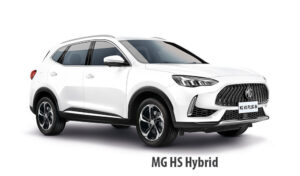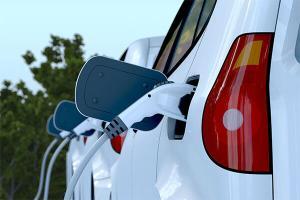Welcome To Electric Vehicles
Welcome to Electric Vehicles

The Electric Advantage: Enjoy a Quieter, Cleaner Drive
Welcome to Electric Vehicles! This website is designed to assist you, the car owner, as you explore the transition from traditional petrol or diesel vehicles to electric vehicles (EVs), including hybrids. While there are countless compelling reasons to consider this change, I aim to provide unbiased information without influencing your decision. Ultimately, the choice is entirely yours to make.
Why Consider Electric Vehicles?
Environmental Impact
By switching to an EV, you’ll be contributing to a healthier planet. Electric cars produce zero tailpipe emissions, so you’ll significantly reduce your carbon footprint. It’s a small change that can make a big difference.
Cost Savings
Who doesn’t want to save money? With EVs, you can reduce those expensive petrol or diesel bills. Not to mention, electric vehicles typically have much lower servicing costs. Imagine the convenience of fewer trips to the mechanic and more money staying in your wallet.
Enhanced Driving Experience
In my personal experience, switching to an electric vehicle has made driving more enjoyable. Here’s why:
- Lower Noise Levels: Without the rattling of an internal combustion engine, the drive is noticeably quieter. You will still hear road noise from the tires, but it’s much more peaceful overall.
- Relaxing Rides: The quietness alone makes for a more relaxing drive. You’ll find it easier to carry on conversations with your passengers without having to shout over engine noise.
- Smooth Operation: Electric motors provide instant torque, offering a smooth and responsive driving experience that’s hard to match.
Types of Electric Vehicles
When exploring the world of electric vehicles, it’s essential to understand the different types available. Here are the main categories:
Battery Electric Vehicles (BEVs)
BEVs are fully electric vehicles that rely entirely on battery power. They have no internal combustion engine, which means they produce zero emissions. BEVs are ideal for drivers committed to eco-friendliness and who have access to regular charging.
Plug-in Hybrid Electric Vehicles (PHEVs)
PHEVs combine a traditional internal combustion engine with an electric motor and battery. These vehicles can be charged via an electrical outlet and can run on electric power alone for short distances. When the battery is depleted, the internal combustion engine takes over, providing greater range flexibility.
Hybrid Electric Vehicles (HEVs)
HEVs also combine an internal combustion engine with an electric motor, but they differ from PHEVs in that they cannot be plugged in to charge. Instead, their batteries are charged through regenerative braking and the internal combustion engine. HEVs offer improved fuel efficiency but do not provide the same environmental benefits as BEVs or PHEVs.
Fuel Cell Electric Vehicles (FCEVs)
FCEVs use hydrogen gas to power an electric motor. They produce zero emissions, with water vapor being the only byproduct. While FCEVs offer quick refueling times and longer ranges compared to BEVs, the availability of hydrogen refueling stations is currently limited.
Charging Infrastructure
One of the most critical aspects of owning an electric vehicle is understanding the charging infrastructure. Here’s an overview of the different types of charging options available:
Home Charging

Most EV owners find home charging to be the most convenient option. With a home charging station, you can plug in your vehicle overnight and wake up to a fully charged battery. There are two main types of home chargers:
- Level 1 Chargers: These use a standard 120-volt outlet and provide a slow charging rate, typically adding about 3-5 miles of range per hour. They are suitable for plug-in hybrids or for EV owners with short daily commutes.
- Level 2 Chargers: These require a 240-volt outlet and offer a faster charging rate, adding 10-60 miles of range per hour. Level 2 chargers are ideal for fully electric vehicles and can be installed in your garage or driveway.
Public Charging Stations
Public charging stations are becoming increasingly common, making it easier to charge your EV on the go. There are three main types of public chargers:
- Level 2 Chargers: Similar to home Level 2 chargers, these provide a moderate charging speed and are found in parking lots, shopping centres, and workplaces.
- DC Fast Chargers: These high-powered chargers can significantly reduce charging time, adding 60-100 miles of range in just 20-30 minutes. DC fast chargers are typically found along highways and major routes, making them ideal for long-distance travel.
- Tesla Superchargers: Exclusive to Tesla vehicles, these fast chargers provide rapid charging and are strategically located to support long-distance travel for Tesla owners.
Workplace Charging
Many employers are now offering EV charging stations at the workplace. This option allows employees to charge their vehicles while at work, providing added convenience and encouraging the adoption of electric vehicles.
Government Incentives
To promote the adoption of electric vehicles, many governments offer incentives to make the switch more affordable. Here are some common types of incentives:
Federal Tax Credits
In many countries, including the United States, electric vehicle buyers can take advantage of federal tax credits. These credits can significantly reduce the purchase price of an EV, making them more accessible to a broader audience.
State and Local Incentives
In addition to federal incentives, various states, provinces, and local governments offer additional benefits. These may include rebates, tax credits, reduced registration fees, and access to carpool lanes for EV owners.
Incentives for Charging Stations
Governments often provide incentives for installing home charging stations or setting up charging infrastructure at workplaces and public locations. These incentives can cover a portion of the installation costs, making it easier to establish a reliable charging network.
Common Myths About Electric Vehicles
Despite the growing popularity of electric vehicles, several myths and misconceptions persist. Let’s debunk some of the most common myths:
Myth 1: EVs Have Limited Range
While early electric vehicles had limited range, advancements in battery technology have significantly increased the distance modern EVs can travel on a single charge. Many current models offer ranges of 200-300 miles or more, making them suitable for most daily driving needs and even long-distance trips with proper planning.
Myth 2: EVs Are Expensive
Although the initial purchase price of an electric vehicle can be higher than that of a traditional car, the total cost of ownership is often lower. EVs have lower fuel and maintenance costs, and various government incentives can further reduce the overall expense.
Myth 3: Charging Takes Too Long
While charging an EV can take longer than refueling a petrol or diesel vehicle, it’s important to consider the convenience of home charging. Most EV owners charge their vehicles overnight, waking up to a full battery each morning. Additionally, the availability of fast-charging stations continues to grow, reducing charging times during long trips.
Myth 4: There Aren’t Enough Charging Stations
The charging infrastructure for electric vehicles is expanding rapidly. Public charging stations are now commonly found in urban areas, shopping centers, and along highways. With the increasing number of charging points and advancements in charging technology, range anxiety is becoming less of a concern.
Myth 5: EVs Aren’t as Fun to Drive
Electric vehicles offer a unique driving experience that many find enjoyable. The instant torque provided by electric motors delivers quick acceleration and responsive handling. Additionally, the quiet and smooth operation of EVs contributes to a pleasant and engaging drive.
Join the Electric Revolution
Switching to an electric vehicle is more than just a trend; it’s a step towards a better future. Not only will you enjoy the immediate benefits of a quieter, more economical drive, but you’ll also feel good knowing you’re making a positive impact on the environment.
Feel free to explore the rest of the website for more information, tips, and resources to help you on your electric vehicle journey.
Thank you for visiting Electric Vehicles. Here’s to quieter, cleaner, and more enjoyable drives ahead!
Regards,
Graham